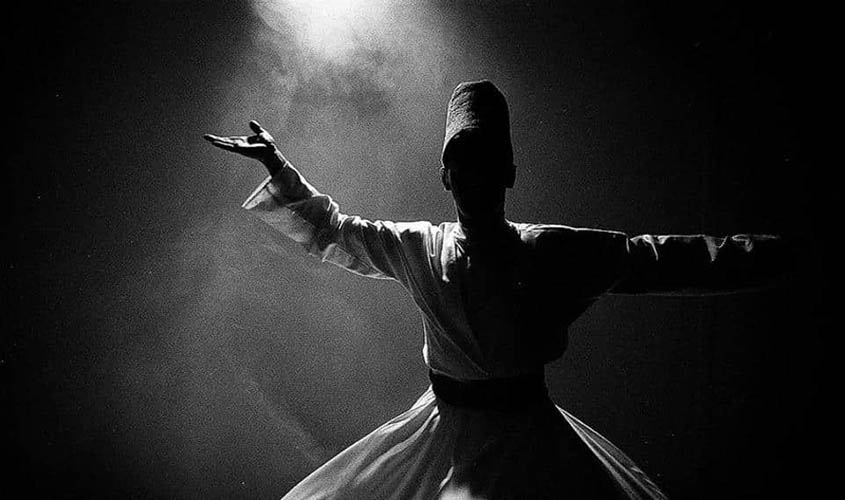I seek to draw attention here to the longstanding historical, political and cultural connections between India and Central Asia, with special focus on the Sufis who played significant roles through intermeshing of ideas and practices. When Zahiruddin Muhammad Babur founded the Timurid-Mughal empire in CE 1526, large parts of the Indian subcontinent were already ruled by a series of Turko-Afghan dynasties for over three centuries, with Delhi being a major centre of power. Conquerors from Central Asian steppes dismounted from their horses to understand the reality of the place and conduct their business of governance in the best possible manner known to them.
The first thing Babur did after entering Delhi, the day after the historic battle of Panipat, was to visit the shrine or dargah of patron saint of the city, Chishti Sufi Khwaja Nizamuddin Auliya, whose grandfather had come from Bukhara to settle down in Badaun in what is now Uttar Pradesh. The next day Babur visited the dargah of another venerable Chishti Sufi Khwaja Qutbuddin Bakhtiyar Kaki, at Mehrauli in South Delhi, who had himself come down from Transoxania, as directed by his preceptor Khwaja Muinuddin Chishti Ajmeri, who originally hailed from Sistan in eastern Iran. The two formidable Sufi figures were much respected by the contemporary Delhi Sultan Shamsuddin Iltutmish, in early 13th century. The pious Sultan also originated in Central Asia.
Further, Babur also thought, as did his great-grandson Emperor Jahangir a century later, that he was recapturing a territory previously conquered by his ancestor and empire-builder Amir Timur, late in the 14th century. Being descendants themselves, Mughals sought to carry forward the legacy of Amir Timur and Changezid Chaghtai practices. The spiritually-blessed vicinity of Nizamuddin Dargah was also chosen for the burial place of the Timurid imperial family under Emperor Akbar, with the grand tomb complex of Emperor Humayun as a living testimony, which is now a UNESCO Heritage site.
Thus, the history of the interconnection between peaceful Sufi spirituality and political aspirations of India and Central Asia can be traced back to the early modern, medieval and, indeed, even further back into ancient times. The connections can be seen in aspects which range from the innocuous to the critical and of great transformative nature.
Before Sufism and before Islamisation, variants of Buddhism had a significant presence in early medieval Central Asia. When Sufis adopted popular practices of Islam, they appropriated many Buddhist beliefs and practices as well, besides replicating monasteries with simpler khanqahs of their own. Shared beliefs included aspects such as notions of God and truth, bodily practices,commonality between yoga and Sufism, belief in the unity of existence, and respect for diversity. The key terms include tauhid, wahdat-ul-wujud, wahdat-us-shuhud, ekeshwarwad and Advaita philosophy. Together, these concepts and theories created conditions for peaceful coexistence of a great diversity of opinions and practices, which the political system has been able to maintain with considerable success, aberrations apart.
Sufi orders, silsilas, which came to India and became popular or politically influential included Chishti, Suhrawardi, Naqshbandi, and Qadiri. At the same time, connections may also be seen in political theory, philosophy and practices, which were developed in Central Asia and were brought to India by the medieval and early modern empire-builders. Together they shaped political ideas: for example, broad-based political framework of akhlaq in contrast to the earlier, perhaps more narrowly conceived moral conduct of adab.
The connections can also be seen in common cultural practices and the emergence of new forms: literature, music, architectural developments, etc. Languages such as Urdu originating in army camps took shape and flourished in Sufi khanqahs, before emerging as an elegant language having a vast literature. Mughals in India struggled with their mother-tongue, Turkish language. Turkish-speaking married women with children were specially invited to serve as breastfeeding foster-mother for Timurid children born to Indian mothers to inculcate Turkish mannerisms and language, a strategy that did not work to the satisfaction of the imperial family. For, Babur wrote his autobiography in Chaghtai Turkish, but Jahangir composed his autobiographical Tuzuk-i Jahangiri in Persian. Before him, Akbar could have been more comfortable in Hindi. Eventually, officially it was going to be Persian as the language of power and politics, and unofficially and all over Hindi and other vernaculars.
Further, food habits and culture left a deep impact and continues to inform our shared delicious heritage. Mughlai biryani and kebab for a foodie with taste buds, besides simple tahiri, naan and qorma offered in Sufis’ hospices, and not to forget the ubiquitous “sambosa”, in whatever delicious ways you want to make.
New initiatives such as a seminar on cultural legacy as a bridge between India and Uzbekistan, recently organised at the National Museum in New Delhi, is a commendable exercise.

